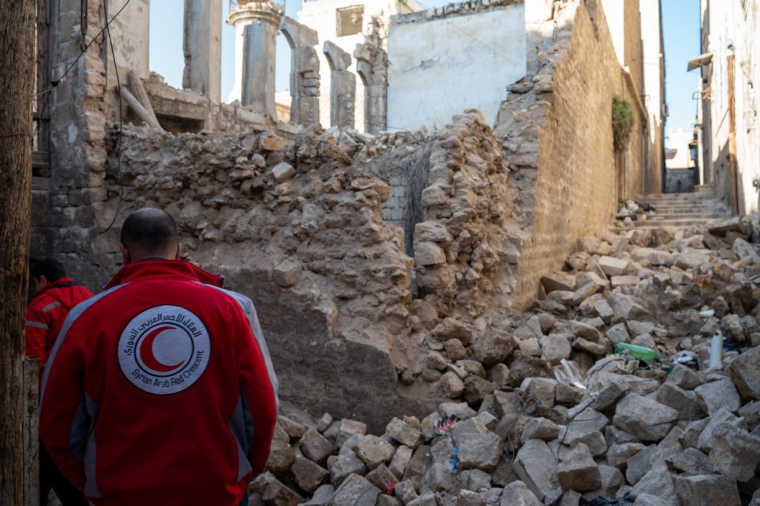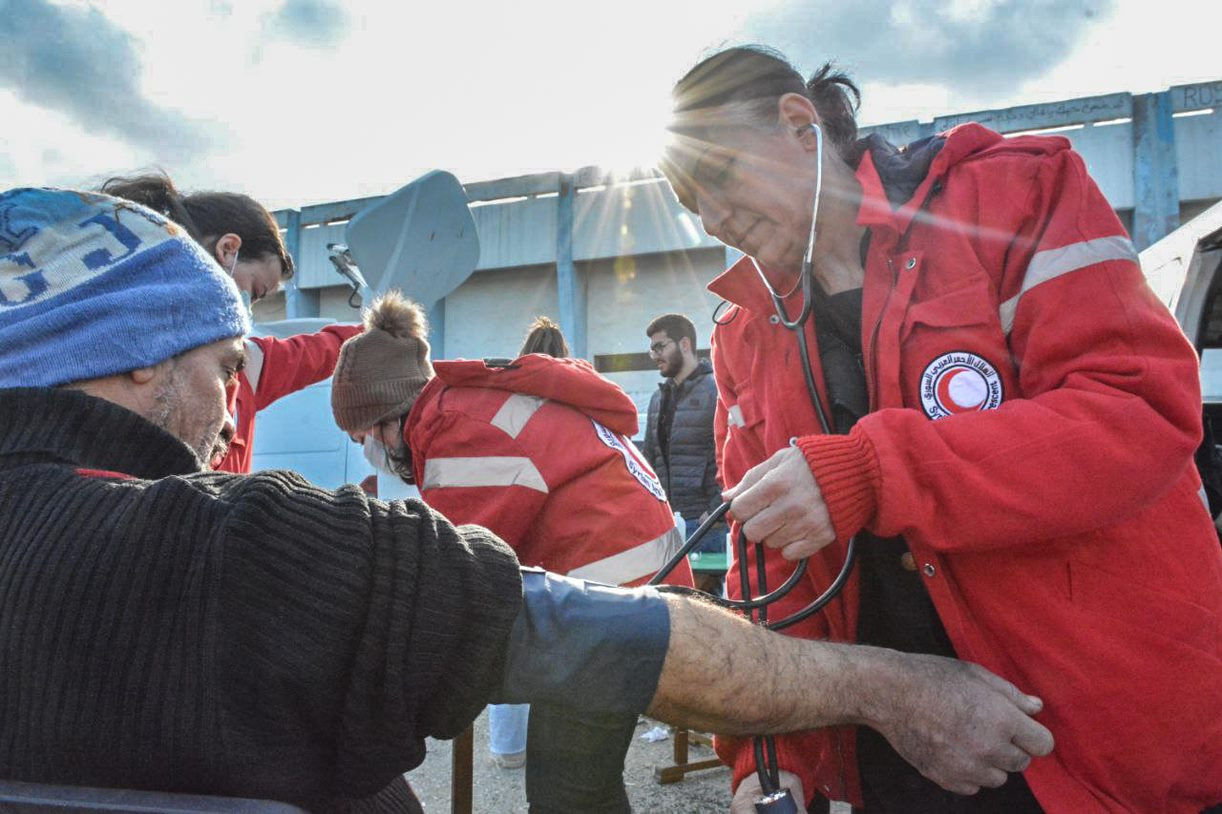Update: 3 months after the earthquakes

Saturday, May 6, marked three months since one of the largest earthquakes in recent history struck large parts of Turkey and Syria, with devastating consequences. In Turkey, 1.7 million war refugees from Syria were already living in the affected region, while on the Syrian side, a country already suffering the effects of years of war was hit, with an estimated 90 percent of the population living below the poverty line. To this day, millions of affected people need humanitarian aid in the region, while the capacity to absorb it was already stretched thin.
- In all, more than 55,000 people lost their lives.
- 300,000 people are displaced within Syria.
- 2.7 million people still live in tents or containers in Turkey.
- The earthquake caused damage to structures in a geographical area roughly the size of Germany, and repairing them will cost more than 100 billion euros.
Response of the Red Cross and Red Crescent Movement.
In Turkey
The Turkish Red Crescent quickly mobilized all possible resources to provide earthquake relief, sending both staff and around 150,000 volunteers in rotation to the affected areas. Every day, about 1,000 staff and 1,500 volunteers are on standby to help those in need.
- Food and water: The Turkish Red Crescent distributed 300 million hot meals, at more than 1,000 distribution points, as well as drinking water and ready-to-eat food packages.
- Relief: Nearly 925,000 emergency relief items were distributed, including tents, blankets, stoves and hygiene kits.
- Financial Aid: More than 600,000 vulnerable people were helped with multipurpose cash and another 140,000 with vouchers.
- Psychosocial assistance was provided to more than 113,000 people.
- Health care was offered to more than 26,000 people
- Blood donation campaigns encouraged more than 420,000 people to donate blood.
Belgian Red Cross-Flanders donated more than 160 large, multi-purpose tents to the Turkish Red Crescent in the first weeks after the earthquake. In addition, it, along with many other Red Cross Societies, financially supported the Turkish Red Crescent both directly and indirectly through the International Federation of Red Cross and Red Crescent Societies.
In Syria
The Syrian Arab Red Crescent (SARC) also used all its resources to provide relief after the earthquake, deploying 4,000 staff and volunteers.
- Since the earthquakes, SARC has provided services in more than 200 temporary shelters for people who lost their homes and livelihoods in the earthquake, and continues to provide further support in 54 longer-term collective shelters.
- Health care: More than 1.1 million people were cared for in clinics and through mobile units (basic health care and first aid, maternal and newborn health care, physical rehabilitation and psychosocial support),
- Distribution of emergency relief goods: More than 3.2 million goods were distributed, including food, household items and medical materials.
- More than 185,000 persons were helped with social assistance (psychological first aid, providing information on earthquake coping, anxiety and loss referral to specialized legal, medical and mental health services).
- 217,000 people were provided with clean water, sanitation facilities and goods that help provide basic hygiene.
- In addition, the International Committee of the Red Cross (ICRC) restored water supplies, housing and public infrastructure for millions of people in the affected areas.
Belgian Red Cross-Flanders contributed to this by providing financial support to our partners on the ground, the German and Danish Red Cross, who work closely with the Syrian Arab Red Crescent.
Humanitarian needs
In both Turkey and Syria, large populations will continue to rely on emergency relief in the short and medium term. Millions of people live in temporary housing, such as tents and containers. Critical infrastructure such as water supplies, roads and medical facilities have been damaged, severely limiting access to safe drinking water and health care, especially in Syria. Here, an outbreak of cholera has been recorded across the country, with most cases found in the earthquake-affected areas.
The large numbers of displaced people in Turkey , have very limited access to basic services, especially when they ended up in tent camps. As a result of large migration flows, the population in certain provincial capitals has also increased sharply, putting even more pressure on already limited services there.
Relief funding from both the Red Cross and Red Crescent Movement and the United Nations falls far short of what is needed to meet the basic needs of the affected population. Every donation, regardless of size, helps to alleviate the difficult situation for the millions of people affected.

